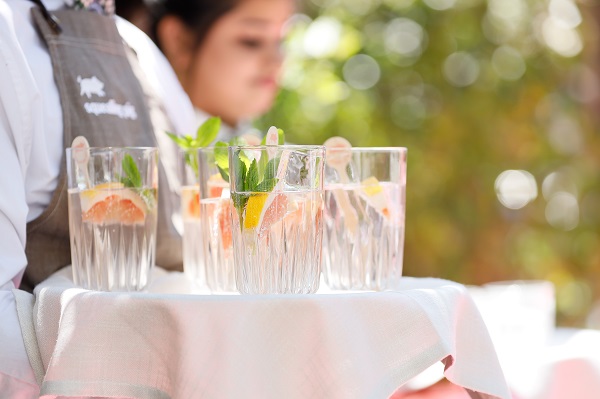Gin is a standout performer in retail liquor, and indeed across the entire FMCG landscape. The 142 per cent dollar growth recorded by gin-based liquor over the past five years in Australian retail has been underpinned by a virtuous growth cycle of drivers.
Firstly, enticing innovation across price points has propelled consumer curiosity and engagement. Augmenting this has been disruptive in-store merchandising whereby a trip into most liquor stores today will feature a well-executed gin display – either at the segment feature or off-location.
In combination, these drivers have bolstered shopper conversion whereby gin buyers are allocating a higher proportion of their glass spirits spend (27 per cent, up from 21 per cent a year ago) to premium gin offerings. The outcome has been a high performing retail fixture mostly devoid of routine discounting that undermines the longer-term equity of the total segment and brands within.
Glass and RTD gin products accounted for $363m in sales in the 52 weeks to 30 June following a sustained period of relentless growth. Glass gin has added $188m in sales over the last five years (to 30 June), with nearly $80m in raw growth occurring in last year alone. Over the last two years we have observed gin significantly outperform the second largest growth segment: vodka. And YOY glass gin growth exceeds 25 per cent across all states.
Likewise, RTD gin has added +$29m over the same timeframe, with the majority share (+$17m) occurring in the last 12 months. Only Canadian Whisky – led by an outstanding recent performance by Canadian Club – contributed more growth to RTD than gin in the most recent financial year.
Both glass and RTD gin have recorded a twofold increase in share over the last five years. The former now accounts for 8.2 per cent of glass spirit dollar sales, up from 4.1 per cent in 2014. RTD gin remains a relative niche at 1.7 per cent share of RTD – up from 0.6 per cent in 2014.
Growth Drivers
Gin’s accelerated sales ascension has underscored Diageo’s position as the number one growth generating supplier in Australian retail liquor in FY ’19. Gin accounted for eight per cent of Diageo’s dollar sales, but 35 per cent share of its dollar growth. These numbers are akin to rate by which gin is over-indexing in total glass spirts growth.
We have recorded a 23 per cent annual increase in glass gin SKUs in FY ’19, albeit down from the 39 per cent uplift observable a year ago. Amid this surge of NPD activity – which has unsurprisingly coincided with a dip in SKU efficiency ($/SKU) – the popularity of the rosé-hued pink gin serve really stands out.
The ‘Insta-worthy’ pink hue of Gordon’s Pink has been the standout having added +$10m in FY ’19. Meanwhile, the core Gordon’s London Dry also recorded accelerated sales growth, illustrating how pink gin has been incremental to the overall gin segment and Gordon’s brand. IRI’s UK retail data reveals a similar dynamic; in the 52 weeks to 20 July, Gordon’s original added +GBP50m, while Gordon’s Pink added +GBP32m.
In Australia, we have observed non-traditional (non-British) provenance as a sales driving USP. Two examples are Roku and Jinzu, with the former standing out as the leading glass gin NPD having amassed a near $10m in sales. Jinzu, multi-origin Japanese influenced gin, is comparatively smaller but recorded dollar growth of 84 per cent in the last 12 months.
Future Trends
More significant has been the traction of Australian artisan producers that are putting a unique twist on the classic spirit. Against a backdrop of international accolades and attention, YOY dollar growth of 69 per cent for Australian produced gin is more than twice the rate observed in glass gin overall (+33 per cent). We have also observed an 11 per cent price per litre increase in Australian gins over the last 12 months in a segment that was already premium.
This is symptomatic of what we observe more broadly: the rise of flavoured and premium non-traditional gins has inflated prices in the overall gin segment. Among the top 12 growth generating glass spirit segments over the 104 weeks to June 30, glass gin (+ nine per cent) is second only to Cognac (+12 per cent) in the rate of price inflation recorded.
IRI’s shopper panel further validates this willingness to pay a price premium among the four per cent of Australian households purchasing gin. Gin buyers (61 per cent) are 10 percentage points higher than glass spirit drinkers overall to agree that they are “willing to pay a premium price for superior quality”. Gin’s newfound ‘cultural capital’ and NPD dynamism has evidently been an impetus for drinkers to seek value beyond the lowest price. Indeed, IRI’s shopper panel reveals a 10 per cent increase in AWOP (spend per occasion) when gin features in a shopping basket.
Going forward, IRI anticipate eight key trends shaping future directions in what we expect to be a continuation of spirited gin performance. Each of these trends has been outlined and evidenced with local and international observations in our upcoming publication ‘Current & Future Trends in Gin’. Between now and 2020, these eight trends will support a 50 per cent unit sales uplift. For details of the trends, and our projections for the glass gin segment, please contact ask@iriworldwide.com.au.

